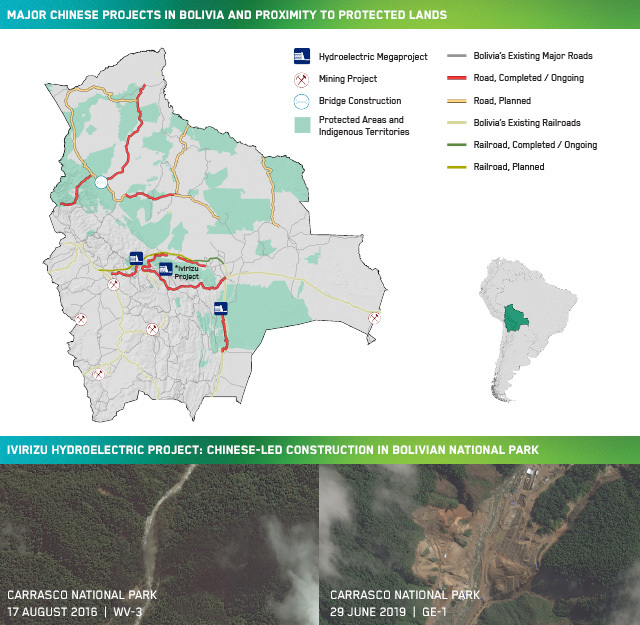The past few years have witnessed an unprecedented commodity boom in the Latin America and the Caribbean (LAC) region. In nations like Brazil and Bolivia, the energy, mining and agriculture sectors are growing rapidly, and the additional transportation infrastructure required to bring these goods to market has created an industry unto itself. What makes this commodity boom unique is the fact that the region has, in essence, one customer for its minerals, soybeans and beef: China.
China’s investments in the LAC region have had significant impacts beyond the transactions themselves. Chinese influence is displacing traditional trade and lending partnerships between LAC nations and the United States and European Union. In addition, the lack of scrutiny over Chinese projects is bringing social and economic concerns like deforestation, climate change, population displacement, and worsening inequality into the international spotlight.
This month’s edition of Maxar’s Spotlight examines how China’s growing presence in LAC is dramatically affecting the region’s economic, political and environmental resource dynamics. By leveraging our industry-leading high-resolution satellite imagery in conjunction with proprietary tools like Weather Desk and Human Landscape, Maxar provides valuable context and timely analysis of how mounting debt, trade deficits, environmental degradation and social complacency are affecting a region that has historically struggled to balance development and oversight.
How can governments and organizations with strategic interests in the region stay informed about the impacts and implications of China’s LAC investments? See the complete picture on the ground and from space in Maxar’s Spotlight.
One Maxar.
Unlocking the promise of space to confront challenges on Earth—and beyond.
Fill out the form to access the latest edition and subscribe to the Spotlight:
Sneak Peek: (excerpt from Maxar Spotlight, Vol. 17)
Environmental and Social Consequences of China’s Growing Interest in Bolivia
President Evo Morales aspires to transform Bolivia into the “energy heart of Latin America” by capitalizing on its hydroelectric potential. With the help and funding of China, three hydroelectric megaprojects are currently underway or in the planning stage. But there are mounting social criticisms regarding the impact these projects are having on Bolivia’s rich forests and indigenous populations. As seen in the map below, Maxar’s Human Landscape and custom data solutions can identify how China’s hydrocarbon and extractive industry investments (and the accompanying transportation infrastructure) are occurring nearby and within constitutionally protected areas.
Construction of the Ivirizu hydroelectric project is currently underway in the Carrasco National Park (see the satellite imagery on the following page). This $550 million project is projected to bring roughly 280 megawatts to the national grid once finished. But it’s also bringing roads, bridges, railroads, and other infrastructure that is arguably more at odds with the constitutional objective of the national park than the dams themselves. Other protected areas across Bolivia are witnessing similar threats from massive hydroelectric and transportation initiatives funded with Chinese yuan.
